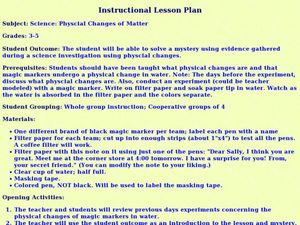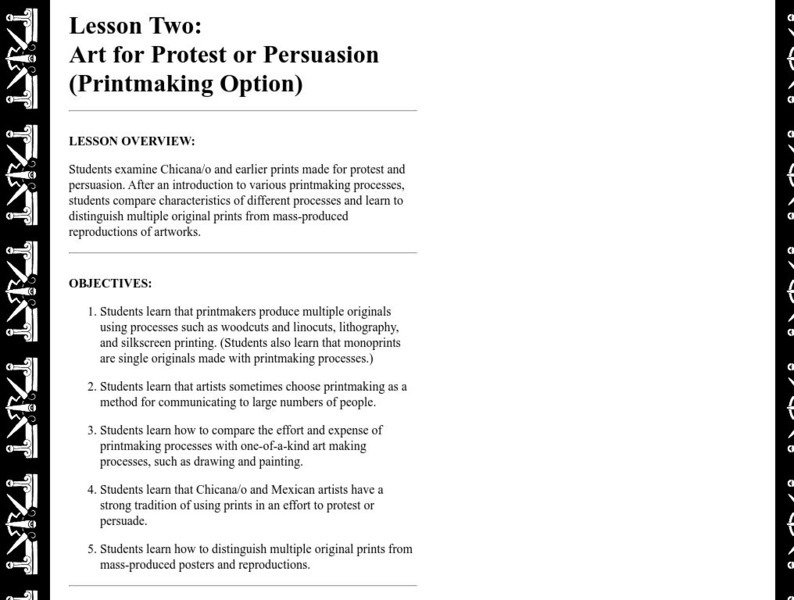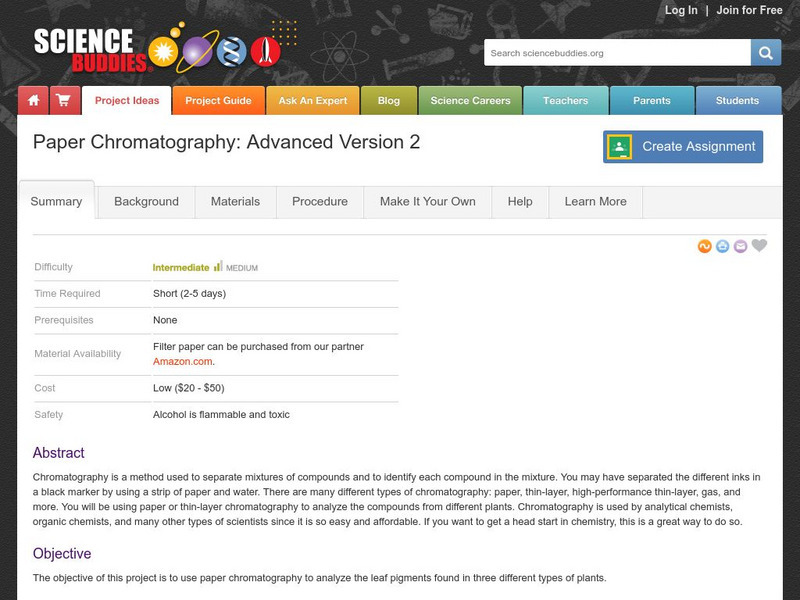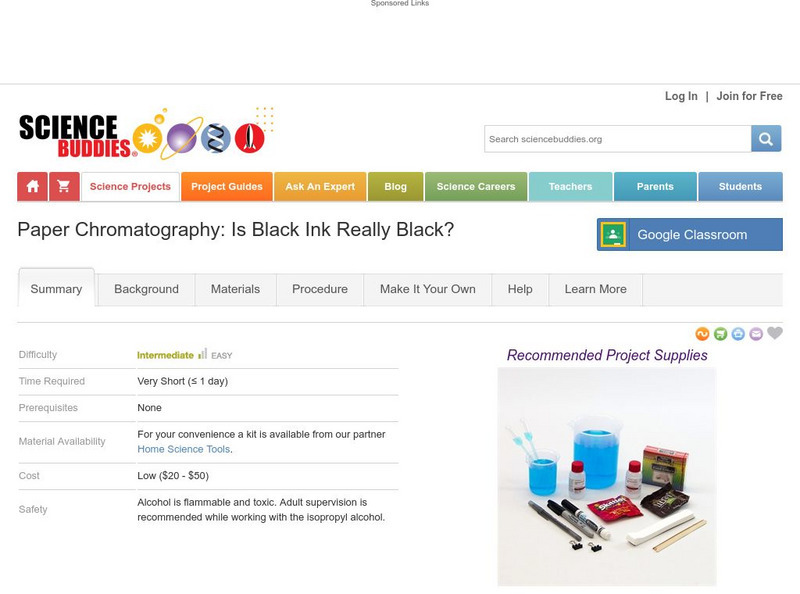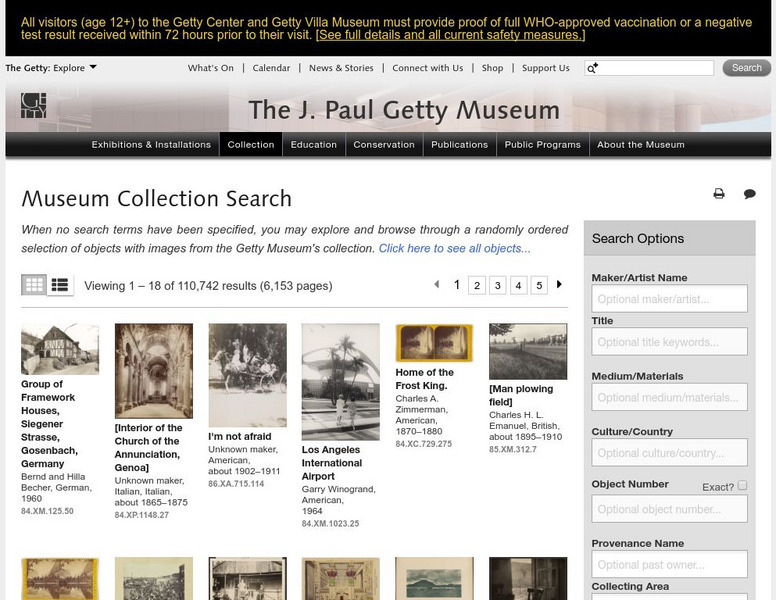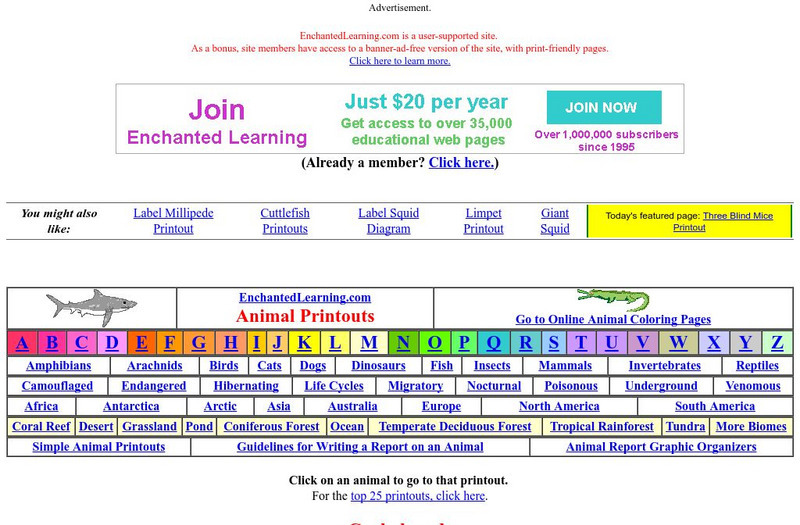American Chemical Society
Chemistry and Comics
Copying the comics couldn't be easier. A fun and simple activity has young scientists rub the back of a comic strip with a spoon to see if the ink will transfer to a white sheet of paper. They then repeat the experiment, rubbing...
Teach Engineering
Chromatography Lab
Groups use alcohol and chromatography paper to separate the color components of black ink. The purpose of the activity is to allow the class to become aware that mixtures exist in hidden places.
Curated OER
Ink
Here is an interesting lesson plan that has learners make ink from two common food items. First, they make ink from beets, then they make ink from onions. The recipes necessary for each are present in the plan. The special thing about...
Curated OER
Social Studies: Thank you Mr. Carver
Students explore the life of George Washington Carver and his inventions. they discover his uses for peanuts and sweet potatoes and how his inventions are still in use today. Students write letters to Carver about his inventions.
Curated OER
I is for Ink
For this handwriting worksheet, learners trace and practice writing the letter 'I' in upper and lower case forms. They also trace and write the word "ink" on the lines provided and describe its meaning as shown in the picture.
Curated OER
Stained Glass Painting with Tempera Resist
Students discuss different styles of stained glass painting. They sketch a design, fill it in with tempera paint as a resist and pour India Ink in the unpainted areas. They wash off excess ink to reveal color. They assess their artwork.
Curated OER
Physical Changes of Matter
Students solve a mystery using evidence gathered during a science investigation. In this physical changes instructional activity, students analyze a note written in marker to determine the physical changes the ink from the pen...
Arizona State University
Asu: Lesson Two: Art for Protest or Persuasion (Printmaking Option)
Site for teachers who are seeking to integrate art and printmaking with language, communication and social studies. It is based on Chicano and Mexican use of the print to make social statements.
Science Buddies
Science Buddies: Paper Chromatography: Advanced Version 1
This project will teach you the basics of analytical chemistry, which is a must for students who want to go into chemistry or materials science. The molecules in objects we see all around us are constantly attracting each other....
Science Buddies
Science Buddies: Paper Chromatography: Advanced Version 2
Chromatography is a method used to separate mixtures of compounds and to identify each compound in the mixture. You may have separated the different inks in a black marker by using a strip of paper and water. There are many different...
Science Buddies
Science Buddies: Paper Chromatography: Basic Version
Many substances are actually mixtures of different things. For example, milk, which looks like it is one substance, is actually a mixture of many different solids and liquids. Chromatography is a technique that is used to separate...
Folger Shakespeare Library
Folger Shakespeare Library: Cool Printing Facts
This informational articles provides interesting facts about Johannes Gutenberg's invention, printing press. The author explains how the printing press was important to the writings of William Shakespeare.
TED Talks
Ted: Ted Ed: The History of Tattoos
If you have a tattoo, you're part of a rich cultural history that dates back at least 8,000 years. Where did this practice of body modification come from, and how has its function changed over time? Addison Anderson tracks the history of...
Regents of the University of Michigan
Animal Diversity Web: Class Cephalopoda
The Animal Diversity Web provides a general overview of the diverse group of cephalopods, including octopus, squid, nautilus, and cuttlefish.
J. Paul Getty Trust
J. Paul Getty Museum: Explore Art, Drawings
This site breaks down the art of drawing into six subcategories, each encompassing a different drawing medium. Mediums include chalk, charcoal, crayon, ink, metalpoint, and pencil. Each subcategory has many visual examples.
Enchanted Learning
Enchanted Learning: Cephalopods
This site provides links to elementary information about cephalopods. Students and teachers will find links to the blue ring octopus, the giant squid, the cuttlefish, octopus and more.
Alabama Learning Exchange
Alex: Things Are Not Always What They Seem
In this lesson, students will make a chromatogram of different types of ink. Paper chromatography will be used to detect the different dyes used in the ink. This lesson can be used for both Physical Science and Chemistry classes.








